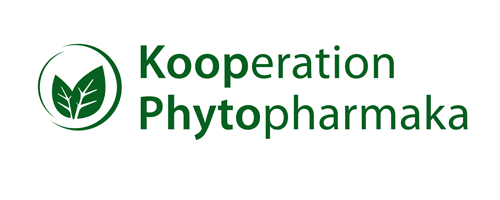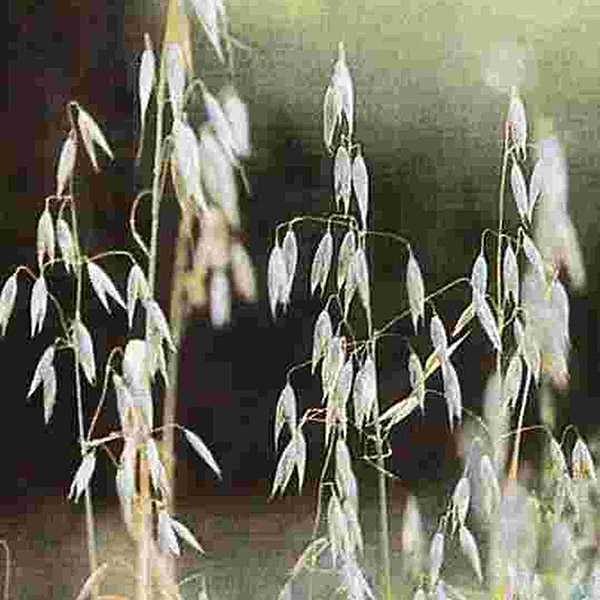Botanical name
Avena sativa L.
Family
Poaceae
Common name
Common oat
Information about the plant
The oat varieties cultivated today as important cereal crops in Europe probably originate from the wild species Avena fatua L. (wild oat) or from other wild forms of oats, which still grow along roadsides and field edges. The oat was introduced to Central Europe from its native Eurasia as a weed. It thrives in moderately acidic, somewhat sandy or loamy soils, and in moist, cool climates. Oats are mainly cultivated in the northern temperate zone.
Oats are an annual, panicle-type grass, with stalks 60 to 120 cm tall and leaves arranged in two rows that sheath the stalk. The leaf blades can reach up to 45 cm in length and 5 to 15 cm in width. At the top of the stem are loose panicles, 15 to 30 cm long, with mostly horizontally protruding branches. The 2 to 3 cm long spikelets hanging from them nod and give the oats their characteristic appearance. This makes them very easy to distinguish from other cereals. The individual spikelets consist of 2 to 3 flowers, with short or no awns; usually, only two of the flowers are fertile. These then develop into spindle-shaped, deeply furrowed oat grains, each with two large, leaf-like husks (fruit type: caryopsis).
The genus name Avena was already in use by the Romans, who only used oats as animal feed. The cultivation of oats (Latin ‘sativa’ = planted) has been documented in Central Europe since the Bronze Age and was valued as excellent feed for horses and poultry. With the rise of motorization and the resulting decline in the use of draught horses, oat cultivation decreased significantly in the first half of the 20th century. Nowadays, oats are once again being cultivated more frequently due to the growing number of riding horses. They have also gained renewed importance as an ingredient in muesli (oat flakes). Oats are not suitable for bread-making due to their low gluten content.
Medicinally used parts of plants (herbal drug)
The herb (fresh or dried), consisting of the green aerial parts of the oat (Avenae herba) harvested shortly before full bloom, is used. The commercially available drug comes from Central European cultivation.
The ripe, dried oat fruits (Avenae fructus) and oat straw (Avenae stramentum) are also used medicinally. Oat fruits are additionally considered food (oat flakes).
Constituents of the herbal drug
Oats contain carbohydrates (ß-glucans, pentosans and oligosaccharides), steroid saponins, flavonoids, flavonolignans, and minerals, mainly silicic acid in soluble form. Oat fruits contain carbohydrates in the form of starch (50 to 60%), proteins, lipoproteins, oat oil, sterols, and flavonoids.
Quality of the drug
There are no quality descriptions available in the pharmacopoeia for oat herb (Avenae herba), oat fruits (Avenae fructus), or oat straw (Avenae stramentum).
Medical applications
Recognised medical use
The HMPC has classified oat herb and oat fruits as traditional herbal medicinal products (see ‘Traditional use’).
ESCOP: Oat herb and oat fruits have not been evaluated.
Oat herb preparations were popularly used for acute and chronic anxiety, tension and agitation, skin diseases, connective tissue weakness, bladder weakness, and as restorative and tonic.
Traditional use
Oat herb has been categorized by the HMPC as a traditional herbal medicinal product (Article 16a of Directive 2001/83/EC). Based upon long-standing use, oat herb can be used internally to relieve mild stress symptoms and as a sleep aid.
Oat fruits have been classified by the HMPC as a traditional herbal medicinal product (Article 16a of Directive 2001/83/EC). Based upon long-standing use, ground oat fruits (oatmeal) can be used externally for mild skin inflammations (e.g. sunburn) and minor wounds.
Herbal drug preparations in finished dosage forms
Oat herb
- Chopped oat herbs for tea preparation
- Liquid extract
- Fresh plant juice
- Oats ground into flour
- Mixture of oat flour with liquid paraffin (5%)
- Chopped oat straw as an additive to baths
Dosage
Oat herb
Tea: Drink 1 cup of oat herb tea 1 to 3 times a day.
Preparation of a tea
Pour 150 ml of boiling water over 3 g of finely chopped oat herb. Strain after cooling.
For a full bath, add 100 g of oat straw to a full bath.
Notes
No safety studies are available on the use of oat herb during pregnancy and lactation. The same applies to the internal use of oat herb in children. There are no safety concerns about the external use of oatmeal and oat straw in children.
Side effects
None known.
Interactions
None known.


